ASUS R9 290X DirectCU II and Sapphire R9 290X Tri-X Video Card Reviews
Overclocking AMD Radeon R9 290X Custom Cards
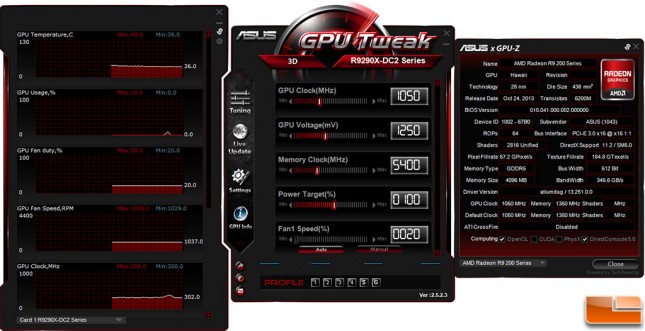
To overclock the ASUS Radeon 290X DirectCU II OC we used ASUS GPU Tweak version 2.5.2.3. This is a great overclocking utility that allows you to adjust the GPU boost clock, memory clock, and fan speed settings. If you want to enabled advanced features you can go into the settings and manually enable adjustments for the GPU voltage, power target, and so on. You also have the latest version of GPU-Z built-in and live monitoring tools all in this one utility.
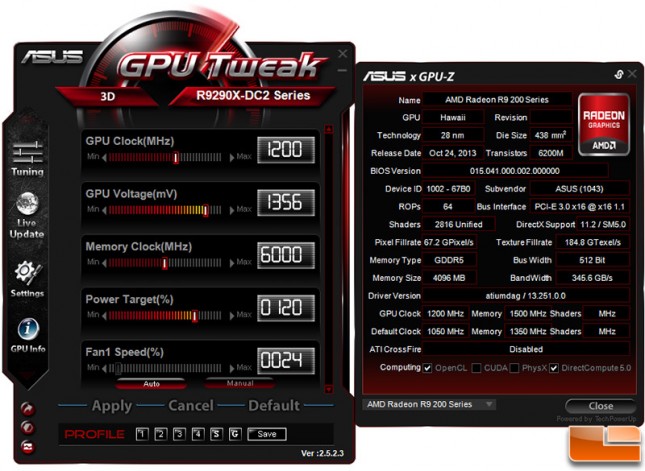
We overclocked the ASUS R290X DirectCU II and had very good results. The defaults speed core clock speed on this card is 1050MHz and we were able to get it up to 1200MHz with rock solid stability after increasing the GPU voltage by 100mV. Without bumping up the voltage we were hitting around 1125MHz, so throwing some extra voltage at the GPU will most certainly allow for higher overclocks. We were able to overclock the memory from 5400MHz to 6400MHz, but found that 6000MHz was the sweet spot as if we went beyond 6000MHz on the GDDR5 memory the benchmarks would actually show performance decreases. It should be noted that we increased the power target by 20% and left the fan speed on auto.
Let’s take a look at some Futuremark 3DMark11 on the performance preset to see how the overclock helped performance.
ASUS R290X DirectCU II OC at 1050MHz core and 6000MHz memory:
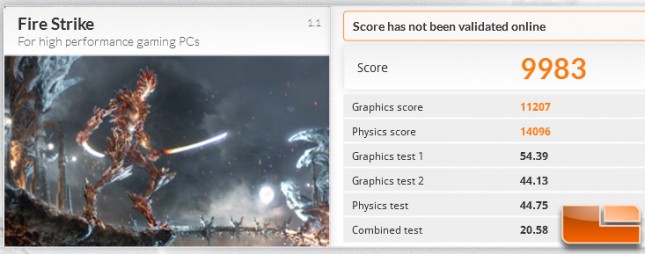
ASUS R290X DirectCU II OC at 1200MHz core and 6000MHz memory:
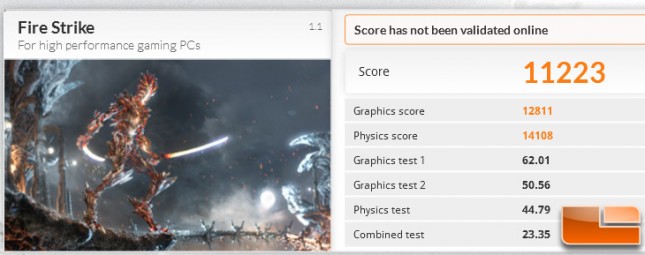
We tried out this overclock with Futuremark 3DMark Fire Strike and saw the score go from 9983 to 11223, so this is a 12.4% improvement over the reference speeds!
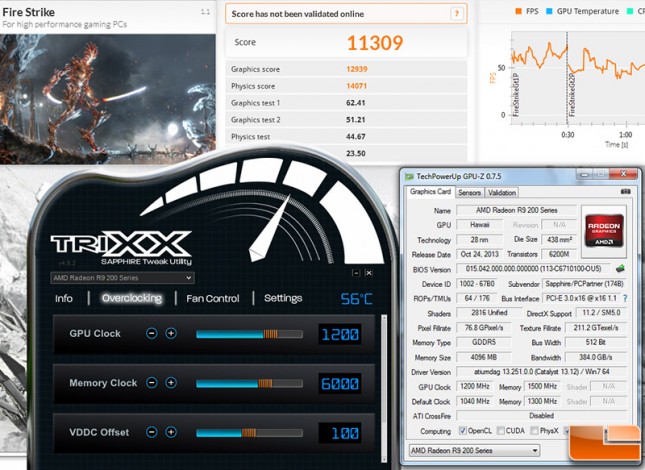
To overclock the Sapphire Radeon R9 290X Tri-X video card we used Sapphires TRIXX v4.8.2 overclocking utility. We gave the card an extra 100mV of power and increased the power target 20% to mimic the settings that we did on the ASUS card. We were a bit shocked to see that we maxed out the card at the same exact clock frequency, but we’ll take 1200MHz core and 6000MHz memory clocks all day long. The Sapphire R9 290X Tri-X scored 11,309 points in 3DMark Fire Strike, which is actually a touch better than what we saw on the ASUS 290X DC2 OC video card. Both cards might start out with different clock speeds, but they overclocked to the same max speeds!
